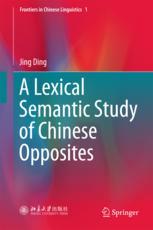

Most ebook files are in PDF format, so you can easily read them using various software such as Foxit Reader or directly on the Google Chrome browser.
Some ebook files are released by publishers in other formats such as .awz, .mobi, .epub, .fb2, etc. You may need to install specific software to read these formats on mobile/PC, such as Calibre.
Please read the tutorial at this link: https://ebookbell.com/faq
We offer FREE conversion to the popular formats you request; however, this may take some time. Therefore, right after payment, please email us, and we will try to provide the service as quickly as possible.
For some exceptional file formats or broken links (if any), please refrain from opening any disputes. Instead, email us first, and we will try to assist within a maximum of 6 hours.
EbookBell Team

4.4
32 reviewsThis book studies Chinese opposites. It uses a large corpus (GigaWord) to trace the behavior of opposite pairings’ co-occurrence, focusing on the following questions: In what types of constructions, from window-size restricted and bi-syllabic to quad-syllabic, will the opposite pairings appear together? And, on a larger scale, i.e. in constrained-free contexts, in which syntactic frames will the opposite pairings appear together? The data suggests aspects that have been ignored by previous theoretical studies, such as the ordering rules in co-occurrent pairings, the differences between the three main sub-types of opposites (that is, antonym, complementary, converse) in discourse function distributions. The author also considers the features of this Chinese study and compares it to similar studies of English and Japanese. In all, it offers a practical view of how opposites are used in a certain language as a response to the puzzles lingering in theoretical fields.
This study appeals to linguists, computational linguists and language-lovers. With numerous tables, illustrations and examples, it is easy to read but also encourages readers to link their personal instincts with the results from a large corpus to experience the beauty of language as a shared human resource.